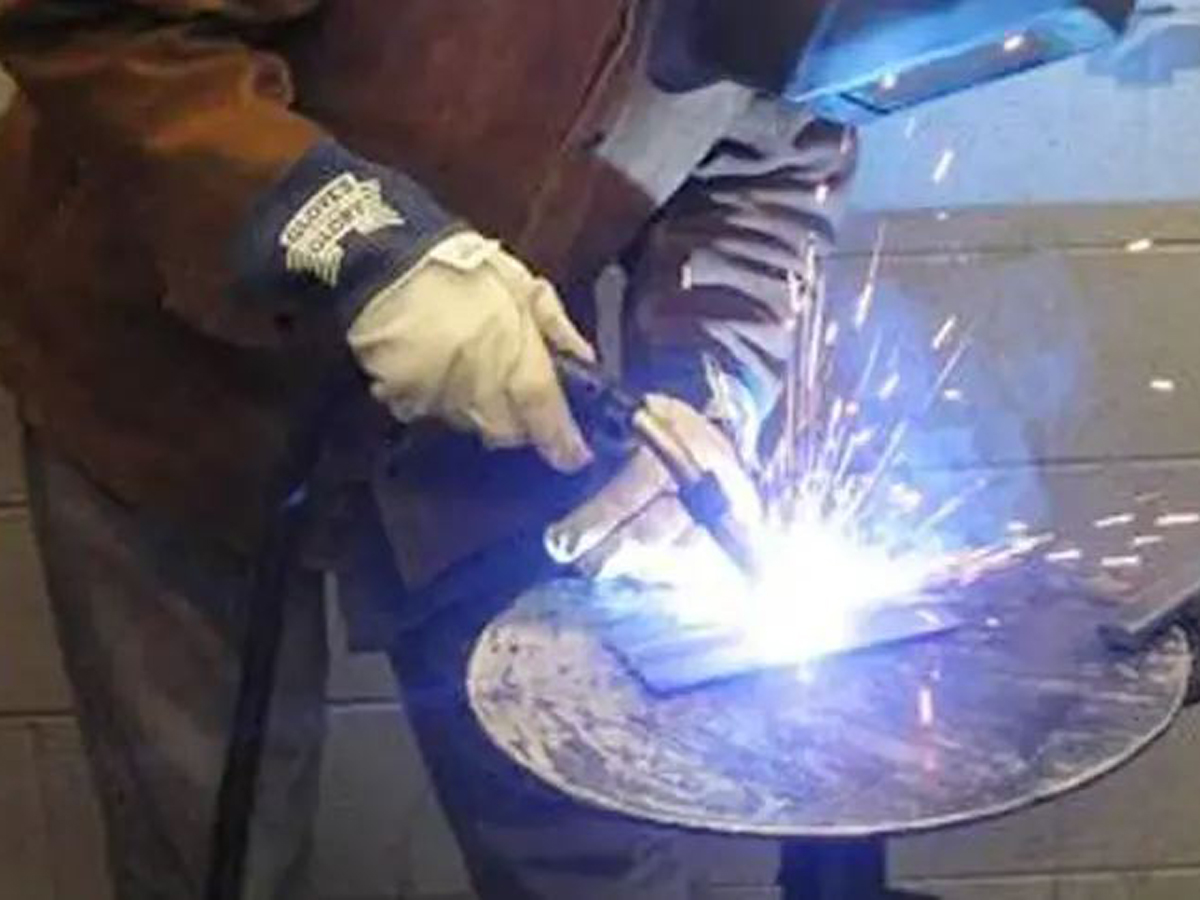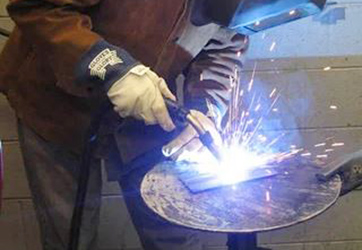Are you ready to take your welding skills to the next level? Whether you are a novice welding enthusiast or a seasoned professional, mastering proper welding techniques is essential for achieving strong, durable, and visually appealing welds. In the world of welding, precision is paramount. Successful welds require meticulous attention to detail, an understanding of different welding methods and materials, and the ability to troubleshoot common welding challenges. In this article, we will delve into the art and science of proper welding techniques, equipping you with the knowledge and insights needed to elevate your welding proficiency.

Photos: instructables
From selecting the right welding process for the specific material to mastering the intricacies of heat control and electrode manipulation, the journey to mastering proper welding techniques is both challenging and rewarding. So, grab your welding helmet and get ready to explore the fundamental principles and advanced strategies that will pave the way for flawless welds and professional-quality results.
Importance of Proper Welding Techniques
Proper welding techniques are crucial for achieving high-quality and durable welds. Whether you are working on a small DIY project or large-scale industrial applications, using the right welding techniques ensures structural integrity and longevity of the welded components.
Understanding the science behind proper welding techniques is essential for preventing common issues such as weak welds, porosity, and cracking. By mastering these techniques, you not only ensure the safety and reliability of the welded structures but also elevate the aesthetic appeal of the finished product.
Moreover, adhering to basic welding techniques is often a requirement in various industries and is essential for meeting regulatory standards and certifications. Whether it’s automotive, construction, aerospace, or manufacturing, the ability to execute proper welding techniques is a valuable skill that can open up numerous career opportunities.
The Different Types of Welding Processes
Welding is a versatile process that encompasses various techniques, each suited for specific materials and applications. Understanding the different types of welding processes, such as MIG (Metal Inert Gas), TIG (Tungsten Inert Gas), Stick welding, and Flux-Cored Arc Welding, is fundamental for choosing the right method for the job.
Each welding process has its unique characteristics, advantages, and limitations. For instance, MIG welding is known for its ease of use and high welding speed, making it suitable for a wide range of materials, while TIG welding offers exceptional precision and control, making it ideal for delicate and high-quality welds.
By familiarizing yourself with the various welding processes, you can broaden your welding capabilities and adapt to different project requirements, ultimately enhancing your overall proficiency as a welder.
Proper Welding Safety
While mastering at basic welding techniques is crucial, prioritizing safety is equally important. Welding involves exposure to high temperatures, intense light, and hazardous fumes, making it essential to adhere to strict safety protocols.
Investing in proper personal protective equipment (PPE) such as welding helmets, gloves, and flame-resistant clothing is non-negotiable. Ensuring adequate ventilation in the welding area and using respiratory protection can minimize the risks associated with welding fumes and airborne particles.
Being mindful of fire hazards and implementing fire prevention measures, such as keeping a fire extinguisher nearby, is imperative for creating a safe working environment. By prioritizing safety precautions, you not only protect yourself from potential harm but also uphold the integrity of your welding work.
Proper Welding Equipment
In addition to mastering the techniques, having the right equipment is essential for executing proper welds. Welding equipment, including welding machines, welding electrodes, clamps, and protective gear, plays a pivotal role in achieving consistent and high-quality welds.
Investing in high-quality welding equipment not only enhances the precision and efficiency of welding but also contributes to the overall safety and reliability of the process. Whether it’s selecting the appropriate welding machine for a specific welding process or choosing the right electrode for the material being welded, having the right equipment is a cornerstone of proper welding.
Regular maintenance and calibration of welding equipment are crucial for ensuring optimal performance and extending the lifespan of the tools. By prioritizing the upkeep of welding equipment, you can avoid potential malfunctions and uphold the quality of your welding work.
Step-by-Step Guide to Mastering at Welding Techniques
Mastering proper welding techniques involves a systematic approach that encompasses various elements such as preparation, execution, and post-weld inspection. By following a step-by-step guide, you can streamline your welding process and achieve consistent, high-quality results.
The first step is thorough preparation, which includes cleaning the welding surface, setting the appropriate welding parameters, and ensuring proper fit-up of the materials. Once the preparation is complete, executing the weld with precision, controlling the heat input, and manipulating the electrode or filler metal are crucial aspects that contribute to the quality of the weld.
Following the completion of the weld, conducting a meticulous inspection to identify potential defects or irregularities is essential. This may involve non-destructive testing methods such as visual inspection, dye penetrant testing, or ultrasonic testing, depending on the application and industry standards.
By adhering to a structured approach and paying attention to each step of the welding process, you can hone your skills and master the art of proper welding techniques.
Common Mistakes in Welding and How to Avoid Them
In the pursuit of mastering basic welding techniques, it’s important to be aware of common mistakes that can compromise the integrity and quality of welds. Issues such as inadequate penetration, excessive spatter, and improper heat control are prevalent in welding and can detract from the strength and aesthetics of the weld.
Understanding the root causes of these mistakes and implementing corrective measures is essential for enhancing your welding proficiency. Whether it’s adjusting the welding parameters, improving the fit-up of the materials, or refining your technique through practice and experience, addressing these common mistakes is instrumental in elevating your welding capabilities.
Additionally, seeking guidance from experienced welders, attending welding workshops, and staying updated on the latest welding technologies and best practices can provide valuable insights for avoiding common pitfalls and continuously improving your welding skills.
Advanced Welding Techniques for Professionals
For seasoned professionals looking to expand their welding expertise, delving into advanced welding techniques opens up a world of possibilities for tackling complex projects and achieving exceptional results. Advanced techniques such as pulse welding, multi-pass welding, and orbital welding offer enhanced control, efficiency, and versatility in various welding applications.
Pulse welding, for instance, allows for precise heat input control, minimizing distortion and heat-affected zones in the welded material. Multi-pass welding, on the other hand, enables the creation of strong and structurally sound welds in thicker materials by layering multiple weld passes, while orbital welding is ideal for achieving consistent and high-quality welds in circular or tube-like structures.
By mastering these advanced techniques, professionals can elevate their capabilities, take on challenging welding assignments, and deliver superior craftsmanship that meets the highest industry standards.
Training and Certification in Welding Techniques
Formal training and certification in welding techniques not only validate your expertise but also provide comprehensive knowledge and hands-on experience in executing proper welding practices. Accredited welding programs and certification courses offer in-depth instruction on welding principles, safety protocols, and industry-specific standards, equipping you with the skills and credentials to excel in the field of welding.
Moreover, pursuing specialized certifications in advanced welding techniques, such as underwater welding, robotic welding, or pipe welding, can further distinguish you as a proficient and versatile welder, opening doors to lucrative career opportunities and project collaborations.
Continuing education and professional development in welding techniques demonstrate a commitment to excellence and continuous improvement, positioning you as a reputable and sought-after professional in the welding industry.
Conclusion and Final Tips for Improving Welding Skills
Mastering at proper welding techniques is a continuous journey that demands dedication, knowledge, and hands-on experience. By understanding the importance of precision, safety, and equipment in welding, familiarizing yourself with different welding processes, and honing your skills through systematic practice and learning, you can elevate your welding proficiency and achieve exceptional results.
As a final tip, embrace every welding project as an opportunity to refine your techniques and expand your capabilities. Pay attention to feedback from experienced welders, seek mentorship, and stay updated on industry advancements to stay at the forefront of welding innovation.
Remember, basic welding techniques not only result in strong and durable welds but also reflect your commitment to excellence as a skilled welder. So, keep the sparks flying and continue your pursuit of mastering the art and science of welding.
